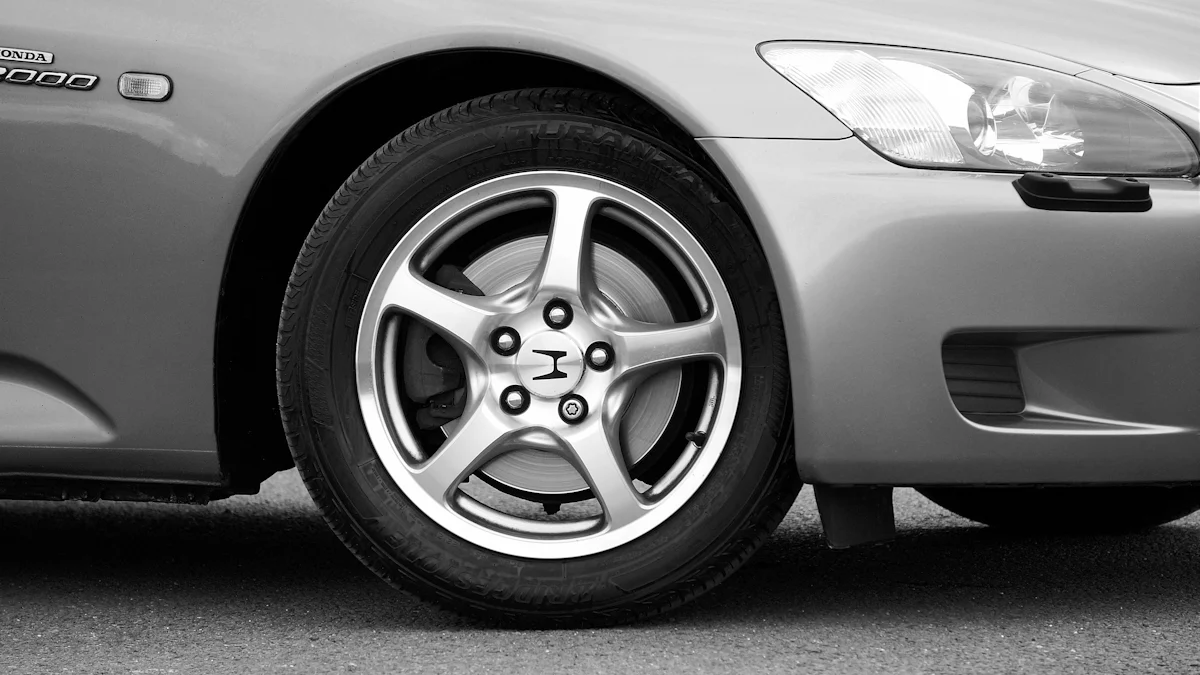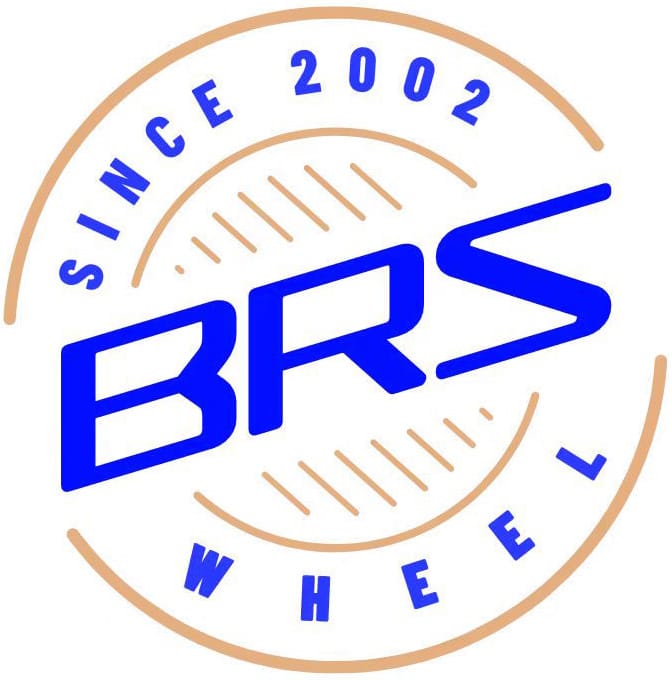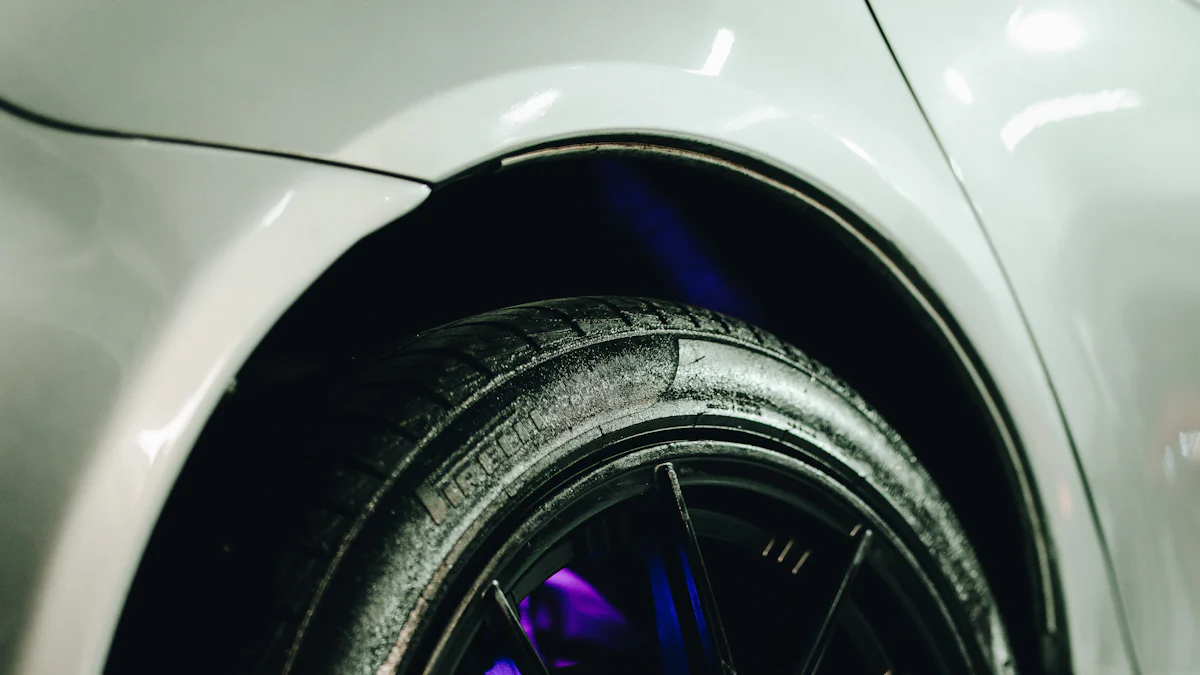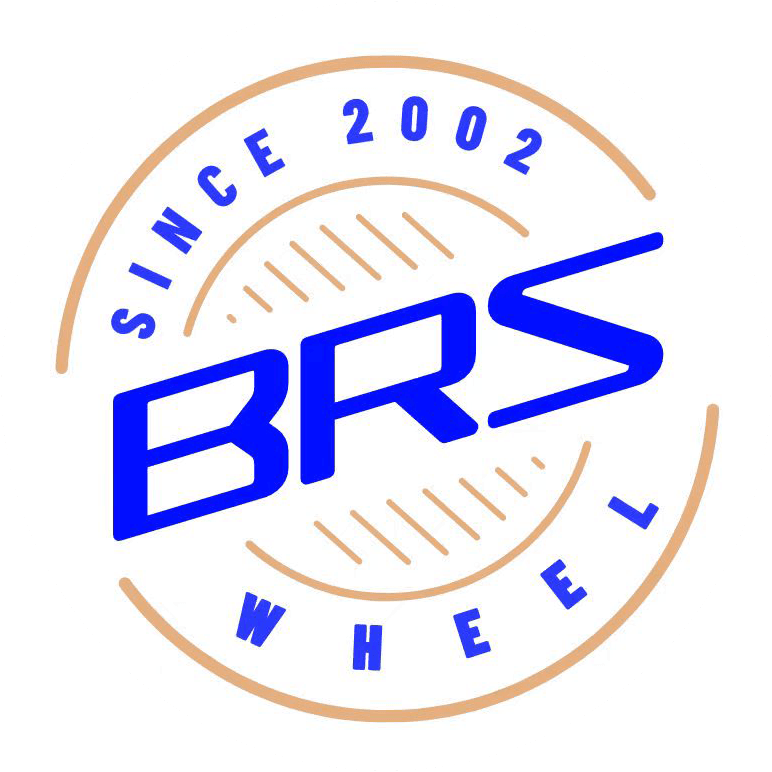
A 15×6 wheel combines a 15-inch diameter with a 6-inch width, making it a popular choice for many vehicles. Its size offers versatility, fitting applications like cars, trailers, and even lawn equipment. You’ll find these wheels in materials like steel or aluminum, each offering unique benefits. They also come in various finishes, such as black or silver, and bolt patterns like 4×100 or 5×4.5, ensuring compatibility with different setups. Understanding these specifications helps you choose the right wheel for your vehicle, whether you prioritize performance, durability, or style.
Key Takeaways
- A 15×6 wheel’s size (15-inch diameter and 6-inch width) offers versatility for various vehicles, including cars and trailers, ensuring compatibility with a range of tire sizes.
- Understanding the ‘J’ bead profile in wheel specifications is crucial for safety, as it prevents tires from slipping off during sharp turns, enhancing performance.
- Choosing the right tire size, such as 205/60-15 or 215/60-15, is essential for optimal performance and safety; always consult your vehicle’s manual for compatibility.
- Regular maintenance, including cleaning and inspecting for damage, can extend the life of your 15×6 wheels and ensure safe driving conditions.
- Customization options, like finishes and colors, allow you to personalize your wheels while also considering performance upgrades, such as lightweight materials for better handling.
- When selecting wheels, always match your vehicle’s specifications, including bolt patterns and offsets, to ensure proper fit and performance.
- Investing in high-quality wheels, whether steel or aluminum, can save money in the long run by reducing the risk of damage and the need for frequent replacements.
Dimensions and Technical Terms of 15×6 Wheels

What Does 15×6 Represent?
When you see “15×6” on a wheel, it’s not just a random set of numbers. The “15” refers to the wheel’s diameter in inches, while the “6” indicates its width. These measurements are crucial because they determine the type of tires that will fit the wheel. For example, a 15×6 wheel can accommodate a variety of tire sizes, making it versatile for different vehicles like cars, trailers, and even lawn equipment.
The diameter affects how the wheel interacts with your vehicle’s suspension and braking system. A 15-inch diameter is common, offering a balance between performance and comfort. The width, on the other hand, influences the tire’s contact patch with the road. A 6-inch width provides stability without being overly wide, which helps maintain compatibility with a range of tire options.
The Importance of ‘J’ in Wheel Specifications
You might notice a letter like “J” included in wheel specifications, such as “15x6J.” This letter represents the wheel’s bead profile, which is the shape of the inner edge where the tire sits. The “J” profile is one of the most common types and is specifically designed to ensure a secure fit for modern tires.
Why does this matter? A proper bead profile prevents the tire from slipping off the rim during sharp turns or sudden maneuvers. For instance, some drivers have switched from other profiles, like “K,” to “J” rims to improve tire grip during cornering. This small detail plays a big role in safety and performance, so always check for the correct bead profile when selecting wheels.
“The letter ‘J’ means a tire bead profile. This is the marking used to define the wheel collar profile you should never ignore.” – Oponeo UK Blog
How Dimensions Impact Performance and Compatibility
The dimensions of a 15×6 wheel directly influence your vehicle’s performance and compatibility. A wider wheel, for example, can provide better grip and handling, but it may not fit all vehicles. The 6-inch width strikes a balance, offering enough surface area for stability while remaining compatible with a wide range of vehicles and tire sizes.
The diameter also plays a role in performance. A 15-inch wheel is large enough to clear most brake systems while maintaining a comfortable ride. It’s a popular choice for daily drivers and utility vehicles because it doesn’t compromise on durability or efficiency. Additionally, the dimensions affect the wheel’s offset, which determines how the wheel sits in relation to the vehicle’s body and suspension. Proper offset ensures that the wheel doesn’t rub against the fender or interfere with the suspension.
By understanding these technical terms and dimensions, you can make informed decisions when choosing a 15×6 wheel. Whether you’re upgrading for style or replacing a damaged wheel, knowing what these numbers and letters mean will help you find the perfect fit.
Compatible Tire Sizes for 15×6 Wheels
Choosing the right tire size for your 15×6 wheel ensures optimal performance, safety, and compatibility. Tires that fit this wheel size come in various dimensions, each offering unique benefits depending on your vehicle and driving needs. Let’s explore the most common options and factors to consider when selecting tires.
Common Tire Sizes for 15×6 Wheels
Several tire sizes pair well with a 15×6 wheel. These sizes are popular because they balance performance, comfort, and compatibility with a wide range of vehicles. Here are some of the most commonly used options:
- 205/60-15: This size offers a good mix of grip and comfort, making it ideal for daily driving. It provides a stable ride and works well for sedans and compact SUVs.
- 205/55-15: Slightly lower in profile, this size enhances handling and cornering. It’s a great choice if you prioritize performance on smooth roads.
- 215/60-15: With a slightly wider tread, this size improves traction and stability. It’s often recommended for vehicles that require better load support or enhanced grip.
Each of these sizes fits securely on a 15×6 wheel, ensuring a proper seal and alignment. Always check your vehicle’s manual or consult a professional to confirm compatibility before making a decision.
Factors to Consider When Choosing Tires
Selecting the right tire involves more than just matching the size. You need to consider several factors to ensure the tires meet your specific needs. Here’s what to keep in mind:
- Driving Conditions: Think about where and how you drive. For city driving, prioritize comfort and fuel efficiency. For off-road or wet conditions, look for tires with deeper treads and better grip.
- Load Capacity: Check the tire’s load index to ensure it can support your vehicle’s weight. A mismatch could lead to premature wear or safety issues.
- Speed Rating: Match the tire’s speed rating to your driving habits. Higher ratings suit faster speeds but may sacrifice durability.
- Tread Design: Choose a tread pattern that aligns with your needs. Symmetrical treads work well for everyday use, while directional or asymmetrical designs enhance performance in specific conditions.
By considering these factors, you can select tires that not only fit your 15×6 wheel but also enhance your driving experience.
Examples of Tire Sizes for Different Applications
To give you a clearer idea, here are some examples of how different tire sizes perform in various scenarios:
- Daily Commuting: A 205/60-15 tire provides a smooth and comfortable ride, perfect for city streets and highways.
- Performance Driving: If you enjoy spirited driving, a 205/55-15 tire offers better handling and responsiveness on curves and corners.
- Heavy Loads or Towing: For vehicles carrying heavier loads, a 215/60-15 tire delivers improved stability and traction.
These examples highlight how tire size impacts performance. Matching the right tire to your specific application ensures you get the most out of your 15×6 wheel.
Maintenance Tips for 15×6 Wheels
Proper maintenance of your 15×6 wheel ensures its longevity and performance. By taking care of your wheels, you can avoid unnecessary repairs and keep your vehicle running smoothly. Let’s dive into some essential tips to help you maintain your wheels effectively.
Cleaning and Protecting Your Wheels
Keeping your wheels clean not only enhances their appearance but also prevents long-term damage. Dirt, brake dust, and road grime can accumulate over time, leading to corrosion or discoloration. Regular cleaning helps you avoid these issues.
Start by rinsing your wheels with water to remove loose debris. Use a wheel cleaner specifically designed for your wheel material, whether it’s steel or aluminum. Apply the cleaner and scrub gently with a soft-bristle brush to avoid scratching the surface. Pay extra attention to hard-to-reach areas, like the lug nut holes and inner rim.
After cleaning, rinse thoroughly and dry the wheels with a microfiber cloth. To protect the finish, apply a wheel wax or sealant. This creates a barrier against dirt and moisture, keeping your wheels looking new for longer. If you drive in areas with harsh winters or salted roads, clean your wheels more frequently to prevent salt damage.
Inspecting for Damage and Wear
Regular inspections are crucial for identifying potential problems before they escalate. Check your wheels for cracks, dents, or bends. These issues can compromise the wheel’s structural integrity and affect your vehicle’s performance.
Examine the wheel’s finish for signs of corrosion or peeling. Corrosion weakens the wheel and may lead to leaks or imbalances. Inspect the lug nut holes to ensure they’re not worn out, as this can cause improper mounting.
Don’t forget to check the valve stems and bead area where the tire meets the wheel. Look for air leaks or damage that could affect tire pressure. If you notice any unusual vibrations while driving, it might indicate a bent wheel or uneven wear. Address these issues promptly to avoid further complications.
When to Repair or Replace Your Wheels
Knowing when to repair or replace your wheels is essential for safety and performance. Minor issues, like surface scratches or small dents, can often be repaired by a professional. However, severe damage, such as large cracks or significant bends, usually requires a replacement.
If your wheel no longer holds air or shows signs of structural failure, it’s time to replace it. Driving on a damaged wheel can lead to accidents or additional damage to your vehicle. Always consult a professional to assess the severity of the issue and recommend the best course of action.
When replacing your 15×6 wheel, ensure the new wheel matches your vehicle’s specifications. This includes the diameter, width, bolt pattern, and offset. Choosing the right replacement guarantees compatibility and maintains your vehicle’s performance.
By following these maintenance tips, you can extend the life of your 15×6 wheel and enjoy a safer, smoother driving experience.
Customization Options for 15×6 Wheels

Customizing your 15×6 wheel allows you to add a personal touch to your vehicle while enhancing its performance or aesthetics. Whether you’re looking to make a bold statement or improve functionality, there are plenty of options to explore.
Popular Finishes and Colors
The finish and color of your wheels can dramatically change the look of your vehicle. With 15×6 wheels, you’ll find a variety of finishes that cater to different styles and preferences. Some of the most popular options include:
- Black Finish: A sleek and modern choice that complements almost any vehicle. Black wheels, like the *Turismo 15×6 6-5.5″ Black/Machine Aluminum Trailer Wheel*, offer a bold and aggressive appearance.
- Machine Finish: This finish combines polished metal with subtle accents, creating a refined and high-end look. It’s perfect if you want a balance between sophistication and durability.
- Silver Finish: A classic option that never goes out of style. Silver wheels provide a clean and timeless aesthetic, making them a versatile choice for various vehicles.
- Custom Colors: If you want to stand out, custom colors like bronze, gold, or even vibrant hues can make your wheels unique. These options are ideal for showcasing your personality or matching your vehicle’s theme.
Choosing the right finish and color depends on your vehicle’s design and your personal taste. A black finish might suit a sporty car, while a machine finish could enhance a luxury sedan.
Powder Coating vs. Spray Painting
When it comes to customizing the color or finish of your wheels, you’ll often choose between powder coating and spray painting. Both methods have their advantages, but understanding their differences helps you make an informed decision.
- Powder Coating: This method involves applying a dry powder to the wheel’s surface, which is then baked to create a durable and even finish. Powder coating offers excellent resistance to chipping, scratching, and fading. It’s a great option if you want a long-lasting and professional look. For example, a powder-coated black finish on a 15×6 wheel can withstand harsh conditions while maintaining its sleek appearance.
- Spray Painting: Spray painting uses liquid paint to coat the wheel. It’s a more affordable option and allows for quick touch-ups or changes. However, spray paint may not be as durable as powder coating and could require more frequent maintenance.
If durability and a flawless finish are your priorities, powder coating is the way to go. On the other hand, spray painting works well for temporary changes or budget-friendly projects.
Upgrading for Performance or Aesthetic Appeal
Customizing your 15×6 wheel isn’t just about looks—it can also improve your vehicle’s performance. Here are some ways you can upgrade your wheels for better functionality or enhanced aesthetics:
- Performance Upgrades: Opt for lightweight materials like aluminum to reduce the wheel’s weight. This improves acceleration, braking, and fuel efficiency. For instance, the Turismo 15×6 6-5.5″ Black/Machine Aluminum Trailer Wheel combines durability with reduced weight, making it a practical choice for performance-focused drivers.
- Aesthetic Enhancements: Add decorative elements like colored lug nuts, center caps, or decals to personalize your wheels further. These small details can make a big impact on your vehicle’s overall look.
- Specialized Finishes: Consider finishes like matte, gloss, or textured coatings to achieve a unique appearance. A matte black finish exudes sophistication, while a glossy silver finish adds a touch of elegance.
Whether you’re upgrading for better handling or turning heads on the road, customizing your 15×6 wheel lets you tailor your vehicle to your exact needs and preferences.
Tips for Selecting the Right 15×6 Wheels
Choosing the right 15×6 wheel for your vehicle can feel overwhelming, but breaking it down into key factors makes the process easier. Let’s explore how you can make an informed decision that balances performance, compatibility, and value.
Matching Wheels to Your Vehicle’s Specifications
Your vehicle’s specifications should always guide your wheel selection. Start by checking your owner’s manual or consulting a professional to confirm the required wheel size, bolt pattern, and offset. These details ensure the wheel fits securely and performs as intended.
The bolt pattern is especially important. It refers to the number of bolt holes and their arrangement on the wheel. For example, a 15×6 wheel might have a 4×100 or 5×4.5 bolt pattern. If the bolt pattern doesn’t match your vehicle, the wheel won’t mount properly. Always double-check this measurement before purchasing.
Offset is another critical factor. It determines how far the wheel sits from the hub. A proper offset ensures the wheel doesn’t rub against the suspension or fender. For most vehicles, a positive offset works best, but always verify what your car requires. Matching these specifications guarantees a safe and smooth driving experience.
Balancing Cost, Quality, and Durability
When selecting a 15×6 wheel, balancing cost, quality, and durability is essential. While it’s tempting to go for the cheapest option, low-cost wheels often compromise on materials and craftsmanship. Investing in a high-quality wheel saves you money in the long run by reducing the risk of damage or frequent replacements.
Steel wheels are a budget-friendly and durable choice. They handle heavy loads well and resist damage from road debris. Aluminum wheels, on the other hand, are lighter and improve fuel efficiency and handling. Consider your driving habits and needs when deciding between these materials.
Durability also depends on the wheel’s finish. A powder-coated finish resists chipping and corrosion, making it ideal for harsh conditions. If you live in an area with salted roads or extreme weather, prioritize wheels with protective coatings. Spending a little more upfront ensures your wheels last longer and perform better.
Considering Bolt Patterns and Offsets
Bolt patterns and offsets play a significant role in compatibility and performance. The bolt pattern must align perfectly with your vehicle’s hub. Even a slight mismatch can lead to unsafe driving conditions. Measure carefully or consult a professional to avoid errors.
Offset affects how the wheel aligns with your vehicle’s body and suspension. A correct offset prevents rubbing and ensures proper handling. For example, a 15×6 wheel with the wrong offset might stick out too far or sit too close to the suspension, causing issues. Always choose a wheel with an offset that matches your vehicle’s design.
If you’re upgrading or customizing, consider how changes in offset or bolt pattern might impact your vehicle. A professional can help you calculate the best options to maintain safety and performance.
By focusing on these factors, you can confidently select a 15×6 wheel that meets your needs. Whether you prioritize style, durability, or performance, understanding these details ensures you make the right choice.
FAQs
When it comes to 15×6 wheels, you might have some questions before making a decision. Below, you’ll find answers to the most common queries to help you feel confident about your choice.
1. What vehicles can use 15×6 wheels?
15×6 wheels fit a wide range of vehicles, including sedans, compact SUVs, trailers, and even lawn equipment. Their versatile size makes them suitable for daily drivers and utility vehicles. Always check your vehicle’s manual or consult a professional to confirm compatibility.
2. What tire sizes work best with 15×6 wheels?
Popular tire sizes for 15×6 wheels include:
- 205/60-15: Ideal for balanced performance and comfort.
- 205/55-15: Great for enhanced handling and cornering.
- 215/60-15: Perfect for improved traction and stability.
These sizes fit securely and perform well in various driving conditions. Refer to your vehicle’s specifications to ensure the best match.
3. Are steel or aluminum wheels better for 15×6?
Both materials have their advantages:
- Steel wheels: Durable, affordable, and excellent for heavy loads. They’re a practical choice for utility vehicles or harsh conditions.
- Aluminum wheels: Lightweight, stylish, and better for fuel efficiency and handling. They suit drivers who prioritize performance and aesthetics.
Your choice depends on your driving needs and budget.
4. How do I know if the bolt pattern matches my vehicle?
The bolt pattern refers to the number of bolt holes and their arrangement. For example, a 15×6 wheel might have a 4×100 or 5×4.5 bolt pattern. To check compatibility, measure the distance between the bolt holes or consult your vehicle’s manual. A mismatch will prevent proper mounting.
5. What is wheel offset, and why does it matter?
Offset determines how the wheel sits in relation to your vehicle’s hub. A proper offset ensures the wheel doesn’t rub against the suspension or fender. For most vehicles, a positive offset works best. Always verify your vehicle’s required offset to avoid performance or safety issues.
6. Can I customize the finish of my 15×6 wheels?
Yes, you can choose from various finishes like black, silver, or machine-polished. Powder coating and spray painting are popular methods for customization. Powder coating offers durability, while spray painting provides flexibility for quick changes. Custom colors like bronze or gold can also add a unique touch.
7. How often should I clean my 15×6 wheels?
Clean your wheels regularly to prevent dirt, brake dust, and road grime from causing damage. If you drive in areas with salted roads or harsh weather, clean them more frequently. Use a wheel cleaner designed for your wheel material and apply a protective wax or sealant after cleaning.
8. What should I do if my wheel gets damaged?
Inspect your wheel for cracks, dents, or corrosion. Minor issues like scratches can often be repaired by a professional. However, severe damage, such as large cracks or significant bends, usually requires replacement. Driving on a damaged wheel can compromise safety, so address issues promptly.
9. Can I use 15×6 wheels for towing or heavy loads?
Yes, but ensure the wheels and tires meet the load capacity requirements. For example, some 15×6 aluminum trailer rims can support up to 2,150 lbs. Check the load index of your tires and the specifications of your wheels to ensure they can handle the weight.
10. Where can I buy high-quality 15×6 wheels?
You can purchase 15×6 wheels from reputable manufacturers or retailers specializing in automotive parts. Look for companies with certifications like IATF 16949, which ensures high-quality standards. Always verify the specifications and reviews before making a purchase.
“Choosing the right wheels isn’t just about looks—it’s about safety, performance, and compatibility.” – Automotive Experts Blog
By addressing these FAQs, you’ll have the knowledge to make an informed decision about 15×6 wheels. If you still have questions, don’t hesitate to consult a professional or reach out to a trusted supplier.
A 15×6 wheel offers a practical solution for various vehicles, blending size, performance, and customization. By understanding its specifications, you can confidently choose a wheel that fits your needs. Dive into the details of compatible tires and maintenance tips to ensure long-term performance. Always consider your vehicle’s requirements and driving habits when making a decision. Balancing these factors with your budget helps you find the perfect match. With the right choice, you’ll enhance your vehicle’s functionality and style.
FAQ
What does “15×6” mean in wheel specifications?
The “15×6” refers to the wheel’s size. The “15” indicates the diameter of the wheel in inches, while the “6” represents its width in inches. These measurements are essential for determining which tires will fit properly. For example, a 15×6 wheel can accommodate various tire sizes, such as 205/60-15 or 215/60-15, depending on your vehicle and driving needs.
What tire sizes work best with 15×6 wheels?
Common tire sizes for 15×6 wheels include:
- 205/60-15: A balanced option for comfort and performance.
- 205/55-15: Ideal for better handling and cornering.
- 215/60-15: Provides enhanced traction and stability.
These sizes fit securely on 15×6 wheels and offer different benefits based on your driving style. For instance, a 205/60-15 tire ensures your speedometer remains accurate, making it a popular choice for daily driving.
Can I use wider tires on 15×6 wheels?
Yes, you can use wider tires, but there are limits. A 215/60-15 tire is often the widest recommended size for 15×6 wheels. Wider tires, like 215/45-15, may fit but could bulge slightly, affecting the sidewall’s appearance and performance. If you want a wider stance without compromising safety, consult a professional to ensure compatibility with your vehicle.
“On a 15×6 rim, wider tires like 215s will bulge out a bit, but they provide a more aggressive look and fill the wheel well better.” – Enthusiast Forum
Are 15×6 wheels suitable for towing or heavy loads?
Yes, 15×6 wheels can handle towing or heavy loads if paired with the right tires. For example, some aluminum trailer rims in this size support up to 2,150 lbs. Always check the load index of your tires and ensure the wheels meet your vehicle’s weight requirements to avoid safety issues.
What is the difference between steel and aluminum 15×6 wheels?
Steel and aluminum wheels each have unique advantages:
- Steel wheels: Durable, affordable, and ideal for heavy-duty use. They resist damage from road debris and are perfect for utility vehicles.
- Aluminum wheels: Lightweight, stylish, and better for fuel efficiency. They improve handling and are great for drivers who prioritize performance and aesthetics.
Your choice depends on your driving habits and preferences. Steel wheels work well for rugged conditions, while aluminum wheels suit those seeking a sleek look and better performance.
How do I know if the bolt pattern matches my vehicle?
The bolt pattern describes the number of bolt holes and their arrangement. For instance, a 15×6 wheel might have a 4×100 or 5×4.5 bolt pattern. To check compatibility, measure the distance between the bolt holes or refer to your vehicle’s manual. A mismatch will prevent proper mounting and could lead to unsafe driving conditions.
What is wheel offset, and why is it important?
Offset determines how the wheel sits relative to your vehicle’s hub. A proper offset ensures the wheel doesn’t rub against the suspension or fender. For most vehicles, a positive offset works best. Always verify your vehicle’s required offset to maintain safety and performance.
Can I customize the finish of my 15×6 wheels?
Absolutely! You can choose from finishes like black, silver, or machine-polished. Powder coating and spray painting are popular methods for customization. Powder coating offers durability, while spray painting provides flexibility for quick changes. Custom colors like bronze or gold can also add a unique touch to your wheels.
How often should I clean my 15×6 wheels?
Regular cleaning prevents dirt, brake dust, and road grime from causing damage. Use a wheel cleaner designed for your wheel material and apply a protective wax or sealant after cleaning. If you drive in areas with salted roads or harsh weather, clean your wheels more frequently to avoid corrosion.
When should I replace my 15×6 wheels?
Replace your wheels if you notice severe damage, such as cracks, large dents, or structural failure. Minor issues like scratches can often be repaired, but driving on a damaged wheel compromises safety. Always consult a professional to assess the condition of your wheels and recommend the best course of action.
Related News
- Posted In:General






